The changing seasons require unique workplace safety considerations. Workers (especially outdoor workers) need to be aware of safety hazards that differ from season to season so they can prevent accidents and mitigate the risk of injury.
Let’s look at the different safety hazards for each season and what workers need to do to stay aware and to stay safe.
Safety hazards and tips for spring
Spring means finally venturing outdoors to clean up winter debris and get ready for changeable weather conditions. Safety concerns in spring include:
- Severe weather conditions, including floods that can cause dangerous driving conditions and slips/falls. Other pop-up weather conditions to be mindful of are lightning strikes that can cause personal injury or loss of electricity, tornadoes and hurricanes that can pop up suddenly and cause imminent danger. Be sure to check weather forecasts and receive weather alerts so you can prepare for the worst.
- Sun hazards from the evening sunset that can cause blind spots and the inability to see what’s ahead when driving. Attempt to avoid driving at this time because the risk of accidents is more severe.
- Insects, such as ticks, that cause Lyme disease. Be sure to wear long sleeves and pants and bright colors so you can see if a tick lands on your clothing. Check hair and exposed areas for ticks when you come in from the outdoors.
- Chemicals or cleaning fluids that require proper eye and hand protection. PPE requirements can change based on seasons, so be sure to follow proper protocols to stay protected.
- Black ice, which can happen when outside spills freeze or there is nightly precipitation that freezes because of still-low temperatures.
Spring can be tricky because the weather in certain areas in March and April can be variable and there is still the likelihood of snow, frost and freezing temperatures.
Summer workplace safety concerns
The biggest safety concerns during the summer months are the sun and hot temperatures, which can result in a variety of illnesses and injuries. Working outdoors in high temperatures and humidity, physical exertion in the heat and in insufficient hydration can all result in heat stress, heat stroke and heat exhaustion. Staying safe requires knowing what the risks are and doing what’s necessary to stay safe. Top safety considerations include:
- Sun exposure for workers who spend the majority of their day working outdoors. UV rays, especially during the hours between 10:00 a.m. and 4:00 p.m., can cause severe burns if your skin isn’t protected. Burns can range from mild redness to severe blisters and peeling. The biggest risk is skin cancer, which can ultimately result in death. If you work outdoors, be sure to cover up as much as possible and wear a hat. Try to get into some shade whenever possible. Be sure to watch for any changes in moles and spots on your skin and, most importantly, protect your skin with frequent sunscreen application.
- Dehydration, which can come on rapidly without sufficient hydration. We all lose water in the summer through sweat, and that water requires constant replenishment. Symptoms of dehydration include fatigue, muscle cramping, confusion, disorientation and nausea. Be sure to have plenty of water available and avoid alcohol, sugary drinks and caffeinated beverages, which can make dehydration worse. It’s also important to monitor urine color. Pale yellow or clear urine indicates a healthy hydration level, while dark yellow urine can signal dehydration.
- Heat-related illnesses, including heat rashes and cramps, and the more serious heat exhaustion and stroke, which can have serious consequences for workers. Heat rashes (i.e., prickly heat) and heat cramps can be painful. But heat exhaustion, which can be a consequence of losing salt and water through excessive sweating, and heat stroke, which should be treated as a medical emergency, are severe reactions to the body overheating. Employers and workers alike need to take precautions to reduce the likelihood of these heat-related conditions. Precautions include:
- The availability of plenty of water
- Frequent rest in the shade
- A reduction in physical labor when temperatures are high
- Back-up workers to provide respite to outdoor workers
- Training in what to be aware of in terms of heat-related illnesses
Summertime brings lots of opportunities for illnesses and injuries, so being proactive and aware of possible heat-related ailments should always be top of mind.
Workplace hazards in autumn
While many relish a respite from the summer heat with cooler temperatures, autumn also has unique safety hazards that you need to be mindful of. Here are several safety hazards and ways to cope with them:
- Slip and fall safety becomes especially important as temperatures drop. Wet leaves, ice and snow can be hazardous for walking and driving. Employers need to keep office walkways clear of ice and snow and be especially careful of black ice that looks like water or can’t be seen at all.
- Ensure company vehicles are winter-ready by checking wiper blades and windshield washer and other fluids. Make sure tires are inflated to the recommended winter pressure and keep an emergency kit in work vehicles that includes flares and a blanket.
- Follow safety precautions with space heaters. If your workplace allows employees to use space heaters, be sure to inform employees about safe usage as they can be a fire hazard if not used properly.
- Flu safety is especially important as the risk of flu increases. Encourage employees to stay at home if they are not feeling well to discourage the spread of germs and illness. Remind employees, especially older workers, to get flu shots.
As the days get shorter and temperatures drop, driving can become more hazardous. Knowing what the weather will be and taking proper precautions is essential now as we move into the winter months.
Preparing for winter safety threats
Along with summer, winter is probably the season with the greatest number of workplace safety risks. Cold-weather hazards can have a severe impact on employees and businesses. These are some of the most dangerous risks to employee safety in winter:
- Cold-stress injuries, including hypothermia and frostbite, are significant health risks in the winter. Hypothermia can result in confusion, disorientation and loss of proper body temperature that can lead to loss of consciousness or even death if the person doesn’t receive immediate care.
Frostbite usually affects hands and feet, causing numbness and tingling or aching sensations. If not addressed immediately, blisters may develop, and amputation can become necessary. Dressing properly and removing wet clothing immediately can help prevent cold stress injuries. Outside workers should always have on hand a change of clothing and insulated gloves and boots. And hats help to keep body heat from escaping through the top of the head.
Check out these ways to help employees avoid cold stress.
- Winter driving hazards include snow, sleet, freezing rain and fog that can result in slippery road conditions and poor or no visibility. Safety protocols include checking for weather-related conditions that could impair driving, making sure that vehicles have adequate gas to add weight, ensuring windshield wipers are working properly and checking that tires are properly inflated. Also before hitting the road, any snow on vehicles should be thoroughly removed, including the tops of vehicles to prevent large amounts of snow and ice from flying off and hitting other vehicles.
- Slips and falls can cause bruises, fractures and head injuries. All stairs and entrances should be kept clear of snow and ice. Any water accumulation on floors and stairs should be taken care of immediately. Use salt on slippery entrances and in parking lots. Ensure that outside workers have proper footwear that provides warmth and traction to reduce the risk of slips and falls.
Taking the necessary steps to help workers avoid seasonal job hazards will keep them happy and safe at work and reduce your company’s risk of incurring high workers’ compensation claims and disability payments. Developing and communicating safety protocols at the start of each season is a sound way to circumvent employee injuries that could put them out of commission for longer than you think.
Whether you’re looking for seasonal employees or a seasonal position, we’re AtWork for you! Visit AtWork.com/locations to find an office near you.





